Australia So Much to See


Heading through the Western Australian Wheatbelt and Hyden-Norseman Road to join the Eyre Highway into South Australia
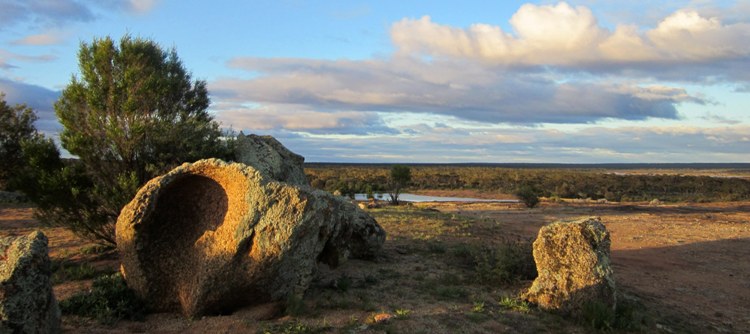
Our first stop was in the wheatbelt town of Dumbleyung.
In 1964, Donald Campbell set two speed records in Australia, on land
and on water.
Bluebird was still and quiet on New Year’s Day 1965, basking in the glory of the achievement in breaking the world
water speed record for Donald Campbell the day before. These were exciting times for the rural community of Dumbleyung, and our friends
were farming not far from Lake Dumbleyung. We often visited them for New Year’s Day and took a short drive to the lake, with
water skiing and swimming part of the day’s activities. This time we weren’t boating, but looking at the Bluebird. I felt deeply
honoured when my sister took a photo of me leaning against this famous speedcraft.
Donald Campbell came to Western Australia
following unsuccessful attempts on the water speed record at Lake Bonney, Barmera, South Australia in November 1964.
It
was on 31 December 1964, during wetter seasons in the wheatbelt, that Donald Campbell set the water speed record in his boat 'Bluebird',
reaching the average speed of 444.66 kilometres per hour over a kilometre stretch during two runs. Campbell had dominated the world
water speed records for a decade. In doing so before the end of the year enabled Donald Campbell to gain a double in 1964, having
broken the land speed record on Lake Eyre in South Australia on 17th July that year.
A memorial to Campbell stands on
top of Pussycat Hill overlooking the lake. Campbell died in England two years later when he was attempting to break the record
he had set at Lake Dumbleyung, still using Bluebird K7.
His record was broken in 1967, and this was broken again by the record
holder, Ken Warby, who then broke his own record when he achieved 511.12 kilometres per hour on Blowering Dam in 1978, which is now
the current record speed.
Lake Dumbleyung, a shallow salt pan, is the largest body of inland water in southern Western
Australia. When full it covers an area of around thirteen by seven kilometres. Today the lake is used mainly for local recreation,
and when we called in November 2009, water levels were a lot lower than in 1964.
Donald Campbell remains the only person
to have broken both the World Land Speed Record and World Water Speed Record in the same year. See our 2019 visit to the site
Donald Campbell broke the Land Speed Record in 1964.
On 31st December 2014, at a ceremony to mark the 50th anniversary of Donald Campbell's record, his daughter Gina Campbell, a water speed champion in her own right, unveiled a full scale replica of Bluebird K7 at Dumbleyung.
You can read about Gina and other family members who made up a dynasty of speed
in Gina Campbell's own website.
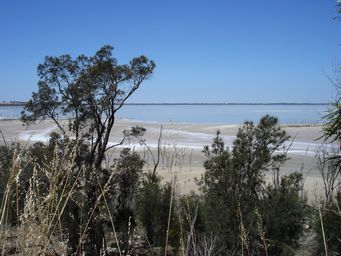
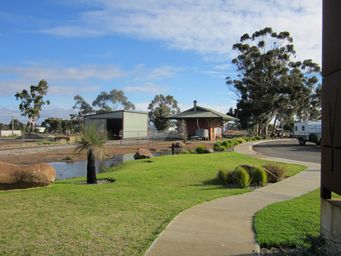
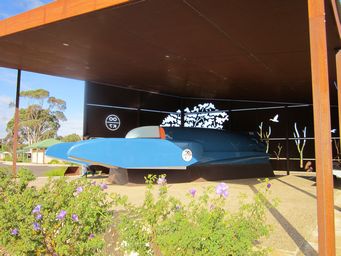
The lake has only overflowed three times in the last 100 years, and some years it becomes quite dry. After a succession of dryer years, Lake Dumbleyung last overflowed in February 2017.
Lake Dumbleyung is shallow salt lake 13
kilometres in length, 6.5 kilometres in width, has a perimeter of 42 kilometres, an area of 5200 hectares (52 square kilometres) and
has a capacity of 200 Gigalitres.
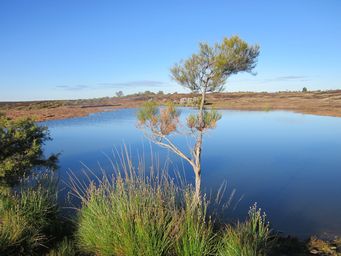
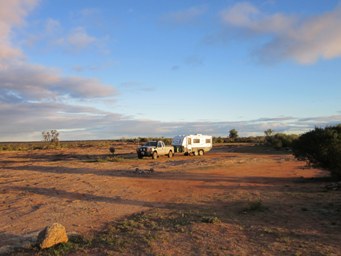
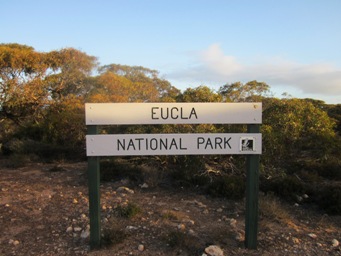
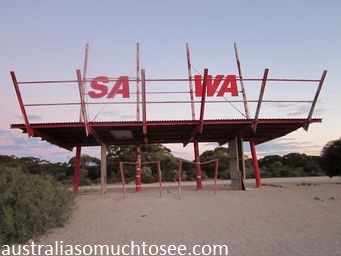
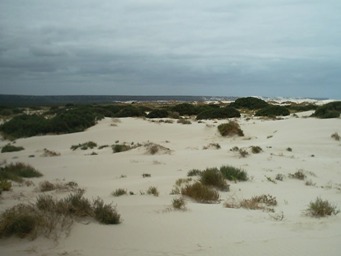
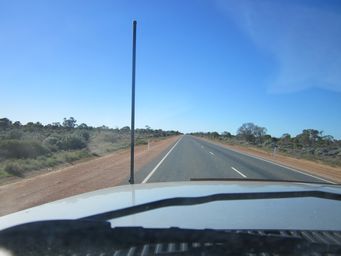
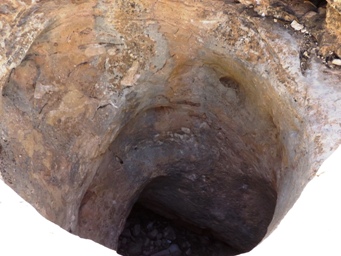
A cave breathes out when air pressure falls, and breathes in when it rises. Speed of air movement is related to the cross sectional
area of a cave's entrance. Air movement in a large cave entrance can be almost impossible to detect.
The Nullarbor is
the direst karst (limestone) area in the world.
The blowholes on the Nullarbor have been formed by weathering through to underground cavities. The cave below here has clearance heights of about 0.5 to 1.5 metres.
All caves breathe. Nullarbor caves breather more vigorously than caves in any
other area of Australia. Air movement at one Nullarbor cave entrance has been measured at 72 kilometres per hour.